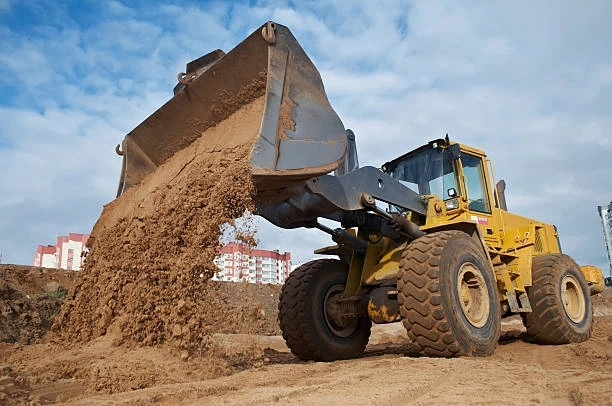As we find ourselves in an increasingly developed world, the earthmoving industry is becoming more pivotal to our landscape metamorphosis. But as the industry surges forward in strides, the question arises, how safe are our earthmoving operations? How can we ensure the implementation of paramount safety measures to guard against any unforeseen accidents and disasters? In this blog post, we delve deep into these pressing questions.
Earthmoving tasks are notorious for their potential danger. From heavy machinery to challenging terrain and unpredictable weather conditions, the risks are omnipresent. Is it not the responsibility of construction management to guarantee their employees' safety? Undoubtedly, yes! That's why this guide is a must-read resource, teatering on the edge of being reckoned an earthmoving safety bible.
Join us as we illuminate on the quintessential safety measures in earthmoving operations. We'll delve into the reasons why safety is paramount, the essential safety practices, protective gear, preparatory safety checks, training needs, and identify the pros and cons of safety measures in the realm of earthmoving tasks.
Why Safety Measures in Earthmoving Operations Are Paramount
Earthmoving operations involve substantial machinery mowing around numerous personnel in confined spaces. Safety goof-ups can be costly, not just monetarily but in the tragic loss of lives. Additionally, construction delays and machinery repairs are hefty expenses that unfold from accidents.
Subtopics like mitigating risk factors better through preventive measures, and fostering safety culture in the workplace, to legislation requirements and penalties against safety breaches, underline the importance of safety. Unquestionably, prioritizing safety safeguards wellbeing, keeps productivity in full-throttle and maintains a robust reputation.
Essential Safety Practices
Being aware of the operational area, ensuring no one stands near moving machinery, and establishing clear signals are just the tip of the iceberg. Conducting regular tool-box meetings ensures personnel are updated on safety protocol modifications and trains them to face unforeseen circumstances.
Further safety practices embody avoiding operations in extreme weather conditions and ensuring drivers are not fatigued or under influence of substances. Regular checks on machinery functionalities and personal protective gears also align with safety practices intended to deter harm.
The Role of Protective Gear
Did you know that having the right PPE (Personal Protective Equipment) reduces the risk of fatal injuries during earthmoving operations by approximately 60%? Equipments like safety helmets, visibility jackets, safety boots, and ear protection are non-negotiable components of a worker's ensemble.
Preparatory Safety Checks
Before diving into the task, it is crucial to conduct a thorough assessment of the work area to identify potential risks. This encompasses checking machinery operation, operator competence, geotechnical assessments, weather conditions, and restraining overhead live power lines.
In earth moving, safety can't be sidelined. Safety helmets, visibility jackets, appropriate work footwear, and hearing protection are imperative. Equally important is machinery maintenance, adhering to load capacities, maintaining safe work distances, and ensuring regular operator training.
Training Needs in Earthmoving Tasks
Training complements safety measures by equipping operators with knowledge and competency. Regular training on machinery operation, safety gear implementation, understanding signage and signal language, and conducting safety checks enhances the overall safety landscape.
Pros and Cons of Safety Measures
While the pros are glaringly evident in terms of safety, productivity, work efficiency and morale, the cons revolve around the cost and time invested in safety measures. However, these marginal cons are dwarfed in the face of pros, subsisting as investments returning significant dividends.
As with any venture, earth moving comes with its fair share of advantages and disadvantages. On the plus side, it lays the groundwork for sturdy developments, channelizes better drainage and, under expert supervision, guarantees job completion within speculated timeframes. On the downside, it can have environmental implications, may lead to soil erosion if not managed properly, and, without appropriate safety measures, can pose a risk to workers.
Conclusion
As we conclude our in-depth exploration of earthmoving tasks' safety, it's worth reiterating what's at stake without the implementation of these measures - Lives. Safety measures ensure that casualties are minimized, productivity is bolstered, and work continuity is guaranteed. Despite the small cost and time input, safety measures carry an overwhelmingly high reward. The onus hence lies on not just the management but every individual to adhere to safety measures diligently. Stay safe, for life is precious.


